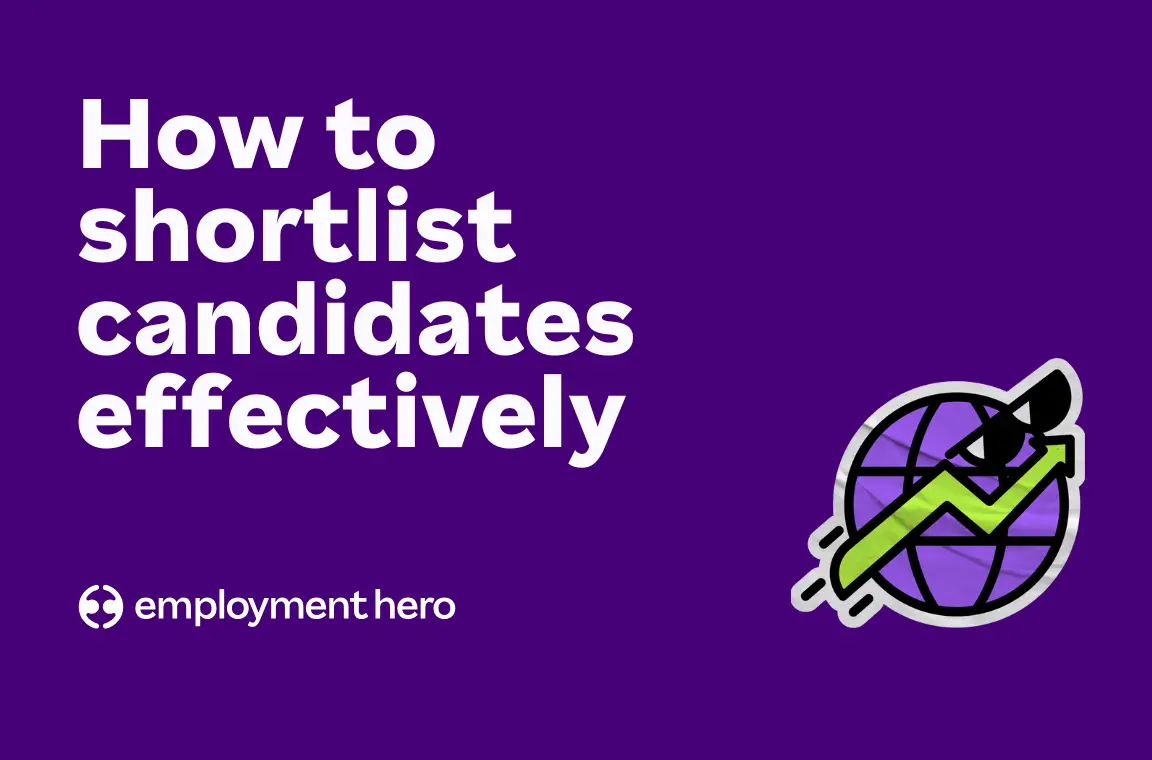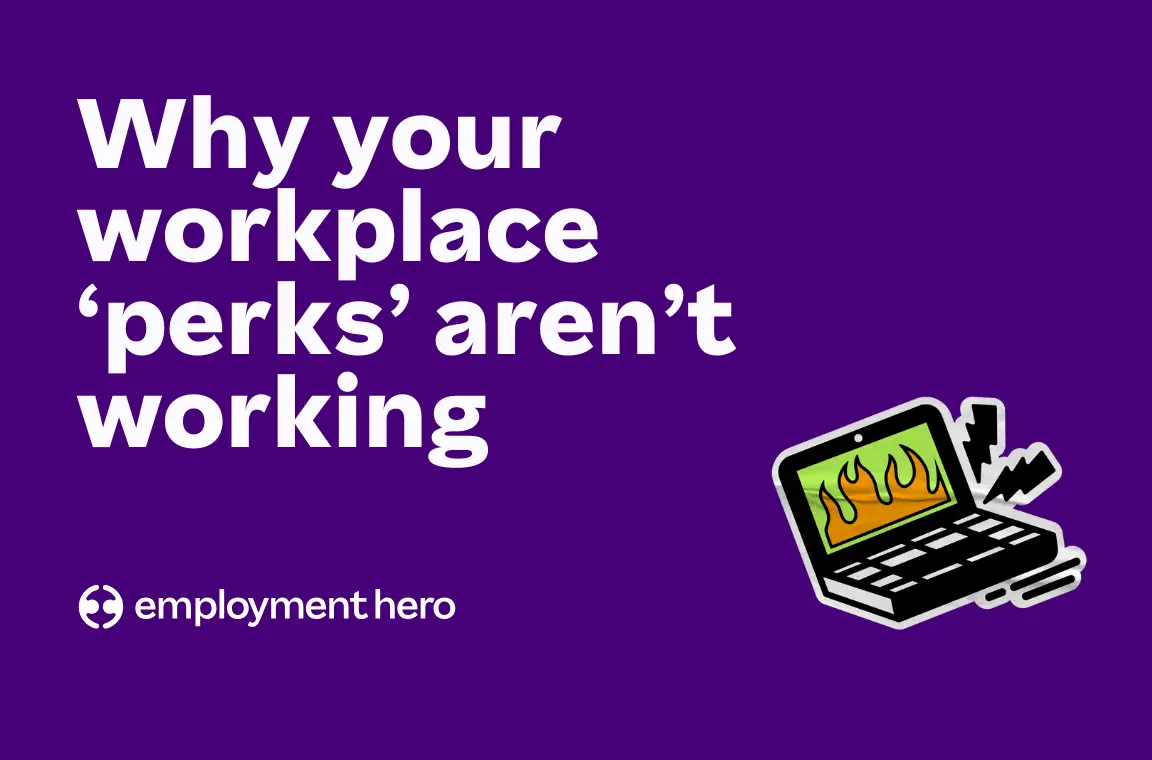How to Write a Formal Warning Letter: 10 Simple Steps
Before heading into a formal written warning, you should try and resolve the issue informally or with verbal warnings. But when that doesn’t work, we’ve outlined 10 simple steps to writing a formal warning letter.

When an employee steps out of line, it’s important to issue them a formal warning. This formalises the situation and protects you as the employer.
By issuing a formal warning, you are providing the employee with an opportunity to improve their behaviour before it leads to more serious consequences.
What is a formal warning letter?
A formal warning letter is basically a written notice which will sit on an employee’s file for future reference that outlines performance concerns and an action plan of what the employee needs to do.
There’s no legal requirement to provide an official warning letter (or a certain number of written formal warnings) before terminating someone.
But when dealing with an unfair dismissal claim, Fair Work does consider if the employee was aware of the issue and if they were given an opportunity to improve or change their behaviour.
The formal employee warning letter process
There are some key steps you should follow when issuing a formal warning letter to an employee.
1. Issue a verbal warning
Before heading into a formal written warning, you should try and resolve the issue informally or with verbal warnings.
We’ve outlined the steps for a more informal process in an earlier blog. But sometimes you have to take the next step and move on to something more serious like an official warning letter.
2. Determine your tone
Have a think about the tone and reasons for your employee warning letter. By understanding your own intentions, you’ll be able to get your point across more clearly.
Do you want to improve your employee’s behaviour? Or are you documenting reasons for their eventual termination?
Your tone can also influence how employee warning letters will be received. If you let anger or personal bias come through, your employee may react by withdrawing rather than improving.
3. Structure your warning letter
There are certain guidelines you need to follow when structuring a formal employee warning letter. There are a variety of templates you can find online, but there are three key components you need to include.
- Firstly, you need to get straight to the point of the warning letter and clearly outline the issue. The more specific you are, the better.
- You then need to identify how this contrasts with the expected behaviour and the necessary action to correct the issue.
- Finally, you need to state the consequences or disciplinary action the employee will face if they fail to improve their behaviour.
4. Schedule a follow-up meeting
When delivering an official warning letter, it’s best to do so during a meeting with the employee. You should let the employee know what the meeting is about so they can prepare and offer them the opportunity to have a support person present.
The meeting should follow the same format as the formal written warning letter. The first thing to include is details of the written warning.
Outline the exact issue or details of the employee’s performance, being as specific as you can.
If this is a second meeting or a follow-up meeting about the issue, then outline when and where those meetings occurred as well as the details of the meeting you had over the formal warning letter.
5. Explain expectations and performance improvement obligations
You then need to outline what you as the employer are expecting the employee to do next.
If you already have set goals or targets, mention those in the warning letter but make sure that they aren’t discriminatory and can be independently measured.
6. Discuss the warning the employee
After you’ve handed over the formal written warning to the employee, you should check that they have read it and understood the warning. Provide them with an opportunity to ask questions or to arrange a follow-up meeting the next day.
Remember, they might be emotional so try and keep to the facts as much as you possibly can.
7. Ask the employee to sign off on the warning letter
While this isn’t compulsory, it confirms that the employee has received and understood the formal warning letter.
If they refuse to sign, simply follow the next step!
8. Keep everything on record
Make sure you keep a copy of the warning letter for your records and at the end of the meeting, make some notes of what happened and other relevant information while it’s fresh in your mind.
While these might not be required, it’s always good to have something to refer back to in case things escalate.
Having a digital employee management program will allow you to record all employee interactions digitally and accessible for future reference.
9. Follow up with the employee
If you’re expecting the employee to come back to you with a plan for improvement, make sure you specify the date that you want to see this by.
Don’t forget to also include any assistance that you’ll provide the employee to help them improve their performance or behaviour.
10. Be consistent across the business
It’s important to remember to be consistent over time. If you’re going to issue a formal warning letter over certain behaviour, this standard must apply to all employees.
Writing official warning letters with a template
Employment Hero offers templates for Formal Written Warning letters that are constantly reviewed by our Employment Specialists to help you get started.
These templates also facilitate a paperless performance management experience where you can send the letter immediately after your meeting.
This makes sure your team member understands the areas for improvement with timelines and measures for delivery. Moreover, it’s added to their employee file for both your reference and their reference.
Making work easy – for everyone.
Related Resources
-
 Read more: Product Update: June 2025
Read more: Product Update: June 2025Product Update: June 2025
Follow our June 2025 product update as we share all of the latest and greatest features we’ve released over the…
-
 Read more: How to shortlist candidates effectively: A hiring guide for employers
Read more: How to shortlist candidates effectively: A hiring guide for employersHow to shortlist candidates effectively: A hiring guide for employers
When you’re faced with hundreds of CVs, how do you spot the needle in the haystack? It’s a daunting task…
-
 Read more: Beyond morning teas and free fruit: Why your workplace ‘perks’ aren’t working
Read more: Beyond morning teas and free fruit: Why your workplace ‘perks’ aren’t workingBeyond morning teas and free fruit: Why your workplace ‘perks’ aren’t working
Thinking of ways to lift your team’s spirits? Before you hit ‘Order again’ on that next batch of cheese scones,…












